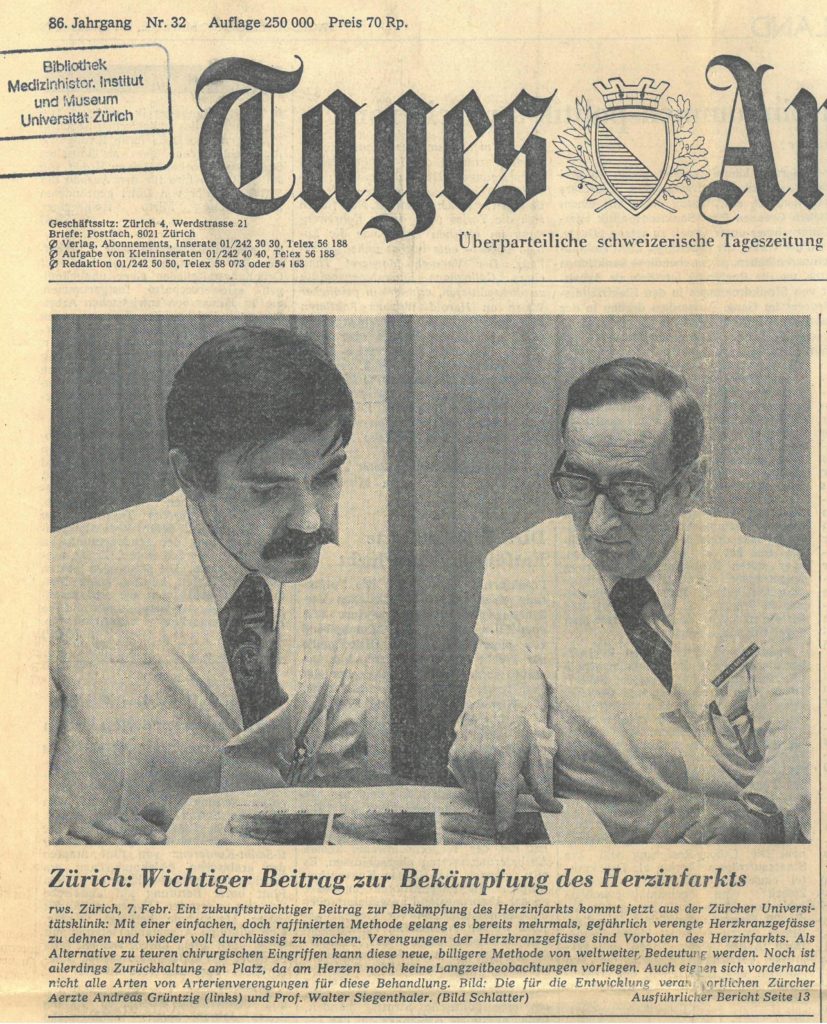Milestones in medical technology

‘Milestones in medical technology’ is the title of a new series of the SHS Newsletter. In future, you can regularly read about innovations from the world of medical technology that have had a profound influence on our lives. Today’s milestone concerns a tiny balloon that has already saved countless lives.
We thank the University Library of Zurich for the use of the photo. www.uzh.ch
The first balloon catheters were created at Dr. Andreas Grüntzig’s kitchen table
Acute heart attack (myocardial infarction or coronary infarction) has been the second-leading common cause of death in Germany for many years. 46,207 people died of a heart attack in 2017. We owe it to cardiologist Andreas Grüntzig, who was born in Dresden in 1939, that the ranks of heart attack victims have not been much higher.
Grüntzig studied medicine in Heidelberg and worked at the University Hospital in Zurich after various residencies. It was there, on 16 September 1977, that he performed the first balloon dilatation of a coronary stenosis. A few weeks later, in November 1977, he reported on this for the first time at the meeting of the American Heart Association. During the conference, the presentation itself was considered a curious insider’s tip. Percutaneous transluminal coronary angioplasty, or ‘PTCA’ for short, made its first appearance in Miami in 1977.
Grüntzig is said to have come up with the idea of dilation as a result of a patient’s suggestion, as his brother recounted in an interview with Deutschlandfunk radio on 14 October 2009. The patient, a plumber with deposits in his arteries, asked Grüntzig why he couldn’t just clear the arteries with wire and a brush, the way he did when faced with clogged pipes. The idea stayed with Grüntzig.
Grüntzig made the first balloon catheters himself in his kitchen, as his supervisors in Zurich did not support him. Initially, the idea was smiled at. Later on, Schneider Medintag AG produced the Grüntzig DILACA catheter. Grüntzig himself went to the USA in 1980 as a professor, where he was finally greeted with support and acclaim. He played a decisive role in shaping interventional cardiology. Grüntzig died in 1985 at the age of 46 in a plane crash with his wife.
Incidentally, one of the leading manufacturers of PCTA systems is our portfolio company, SIS Medical AG, in Switzerland. https: www.sis-medical.com